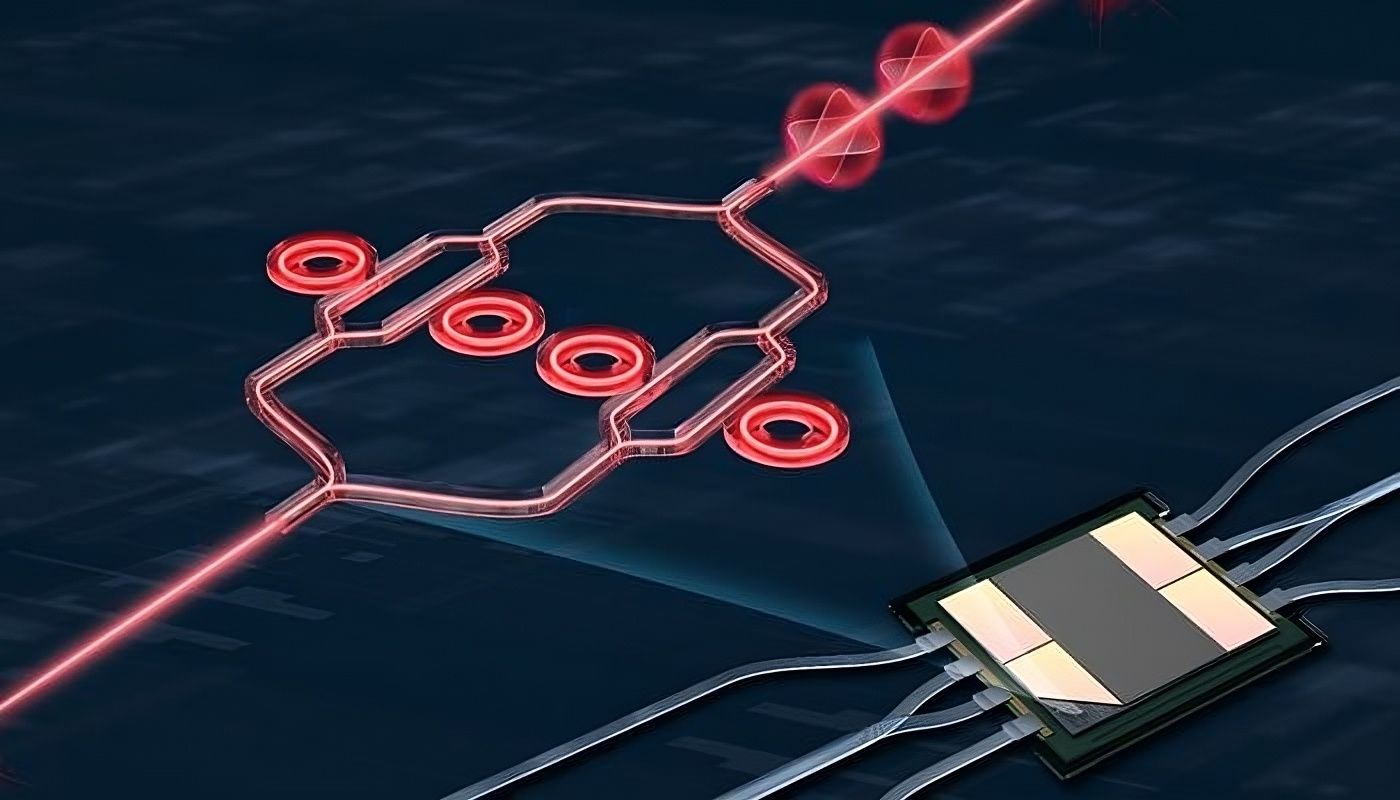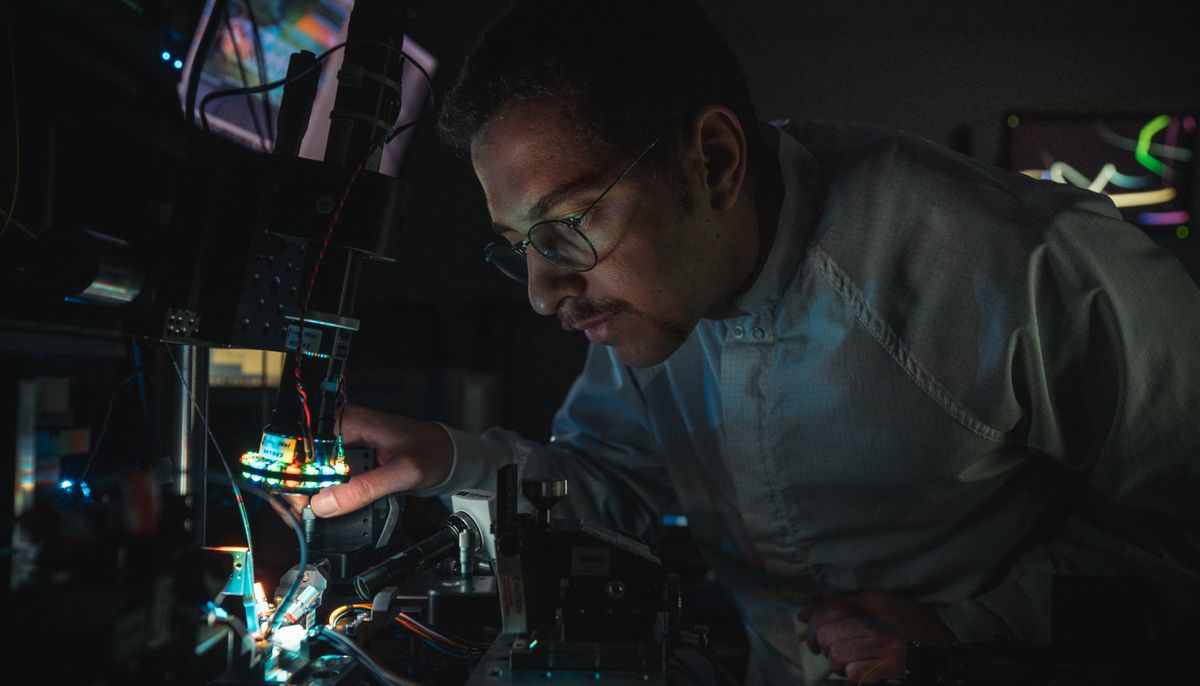Follow us on Google News (click on ☆)
Published in the journal Nature Photonics, this innovation relies on the use of light to transmit information. Unlike traditional systems that use only light intensity, this chip also uses the phase of light, meaning its shift.

The chip, as thin as a human hair, relies on two pairs of ring microresonators to achieve unmatched performance. — Courtesy
By adding a new dimension to the signal, the system achieves unmatched performance while maintaining a tiny size. "We go from a speed of 56 gigabits (Gb) per second to 1000 Gb per second," emphasizes PhD student Alireza Geravand, first author of the study.
The equivalent of 100 million books transferred in 7 minutes
The research team sees enormous potential for AI model training. "With 1000 gigabits per second, you could transfer all the training data—the equivalent of more than 100 million books—in less than 7 minutes, which is the time it takes to make a coffee," he adds. And all this would consume only 4 joules, the energy needed to heat one milliliter of water by one degree Celsius.
The innovation relies on ring microresonators. These tiny silicon devices are capable of manipulating light and encoding information in it. The system is composed of two pairs of rings: one for intensity, the other for phase.
Current AI data centers use tens or even hundreds of thousands of processors, which communicate with each other like neurons in a brain. With each being a few millimeters long, the required infrastructure quickly becomes enormous, as does the energy needed to power it. "We end up with a system that is kilometers long," specifies the PhD student. Thanks to their technology, the devices can communicate quickly and efficiently, as if they were only a few meters apart. This is a considerable advantage as AI needs continue to grow.

PhD student Alireza Geravand works on this technology in the COPL laboratories. — Dany Vachon
This technology could be integrated into the industry in the coming years. Companies like NVIDIA are already starting to use microresonators, although they are limited to light intensity.
"Ten years ago, our laboratory demonstrated this technology. Today, we are taking a new step. Perhaps in a few years, the industry will catch up and this innovation will reach the market," concludes Alireza Geravand.
The other signatories of the study are Zibo Zheng, Farshid Shateri, Simon Levasseur, Leslie A. Rusch, and Wei Shi.